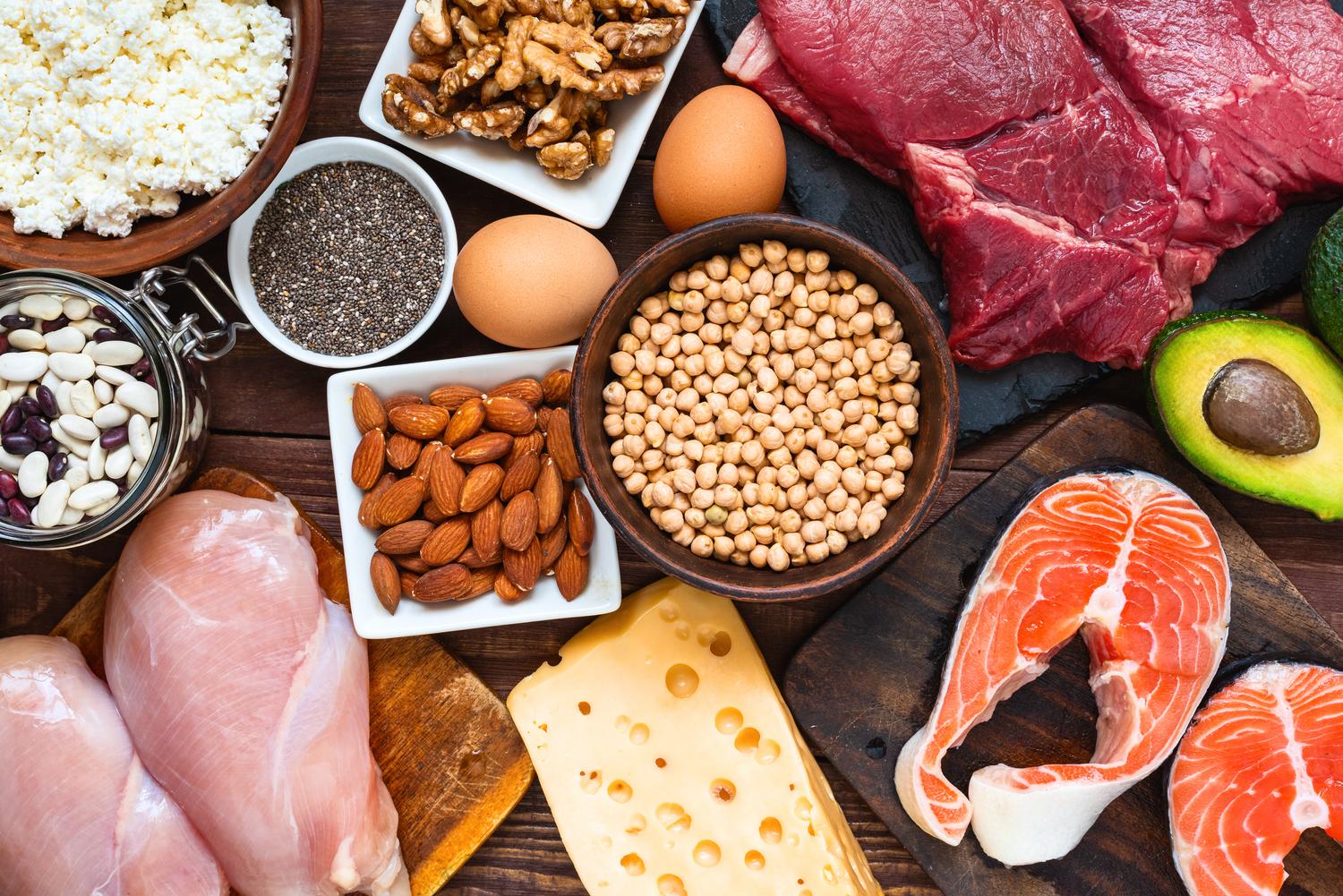Holistic Weight Loss: Nutritional and Exercise Guidance
Creating sustainable weight loss results with nutrition and exercise.
The best chance for success when it comes to long-term weight loss generally comes from what the medical establishment calls “lifestyle changes" – behaviors that result in fewer calories consumed along with increases in physical activity. In addition to regular physical activity, there are various nutritional recommendations to support long-term weight loss goals. We've outlined some general guidance below for nutrition, physical activity and exercise while taking GLP-1s or similar weight loss medications.
A high-level comment on dieting in general from Dr. Allison Edwards, MD.
When dieting for weight loss is treated as a quick-fix or a short-term play, it’s unlikely to have a long lasting impact. Instead of going for the quick-fix approach, consider the small steps you can take daily to reach your long-term weight loss goals.
Incorporating elements of mindful eating, such as stopping not when you’re full, but when you cease to be hungry is a useful mechanism for decreasing the number of calories consumed. Avoiding second helpings and eating from smaller plates are sustainable and effective ways to improve outcomes.
Most importantly, talk to your medical provider about how you want to move forward in your weight loss journey: how often do you expect them to check in on you? What goals do you want to assess at each check in? What changes are you making – and how do you want to be held accountable?
Nutritional guidance and 3 suggested diets
Protein is vital for individuals managing weight. It is even more vital for individuals managing weight with the help of GLP-1 medications. Why? Protein can:
- Boost satiety: Protein increases feelings of fullness for longer periods compared to carbohydrates and fat. This can be beneficial when on GLP-1 medications, which work partially by promoting satiety.
- Build and preserve muscle: When focusing on weight loss, you want to primarily lose fat mass, not muscle. Protein promotes muscle growth and protects against muscle loss during a calorie deficit.
- Increase metabolism: The process of digesting protein burns more calories than digesting other macronutrients.
Below are three diets that align with weight management plans, a GLP-1 medication plan, and a focus on protein:
1. Mediterranean Diet
The Mediterranean Diet is a well-rounded diet prioritizes fruits, vegetables, whole grains, nuts, legumes, fish and healthy fats. It has been proven successful in managing weight and supporting heart health.
Not sure how to dive in? Head to our Mediterranean Diet Weight Loss Guide for tips on getting started, along with a free 7-day meal plan example!
2. High-Protein Diets
High-protein diets place a greater emphasis on protein sources. Choose lean options like chicken, fish, beans, lentils, tofu, and low-fat dairy. Monitor fat intake, as while healthy fat is fine in moderation, excess amounts can be calorie-dense.
Head to our High-Protein Diet Weight Loss Guide for more details, along with a free 7-day meal plan sample!
3. Flexible Dieting (IIFYM)
Also known as IIFYM (If It Fits Your Macros), flexible dieting allows you to have more choice of foods, as long as your calorie and macronutrient targets (especially protein) are met. It allows for treats as long as they fit within your goals.
For additional nutrition guidance and a free 7-day meal plan example, visit our IIFYM Flexible Dieting Weight Loss Guide.
Important nutritional considerations for all diet types:
- Whole, minimally processed foods: Focus on consuming fresh, natural foods rather than highly processed items. Processed foods can contribute to hidden calories and a general lack of nutrients.
- Fruits and vegetables: These provide essential vitamins, minerals, and fiber, all of which are important for both overall health and weight management.
- Hydration: Drinking plenty of water helps with satiety, digestion, and overall well-being.
- Portion control: Even with healthy foods, be mindful of portion sizes to create the calorie deficit needed for weight loss.
- Meal planning: Planning and preparing meals and snacks ahead of time can help prevent unhealthy choices when hunger strikes.
- Reading food labels: Learn to interpret food labels to make informed choices. Pay attention to calories, macronutrients, and added sugars.
- Mindful eating: Practice eating slowly and savoring your food, paying attention to your body's hunger and fullness cues.
- Regular physical activity: Daily movement and exercise are vital. Walking, dancing, gardening, and other activities fit with this principle.
- Shared meals: Meals are typically enjoyed with others, promoting mindful eating and savoring experiences.
As always, you should always speak with your medical provider to determine which specific approach to nutrition is right for you.
Exercise and physical activity guidance for GLP-1-assisted weight loss
GLP-1 medications are a powerful tool for managing blood sugar and weight, but recent research also suggests that they may also result in loss of muscle mass. The guidance below contains helpful information, strategies, and age-specific recommendations for maintaining and building muscle while taking GLP-1 medications.
Why muscle matters:
Muscle plays a critical role in a number of vital body functions, such as:
- Metabolism: Muscle burns calories even at rest, helping to manage weight and blood sugar.
- Strength: Strong muscles allow for freedom of movement and also help to prevent falls, which is especially important as we age. This mobility and stability is critical for an active, healthy life.
- Bone health: Low muscle mass is associated with a higher risk of bone loss and osteoporosis.
Considerations for muscle maintenance and building
It’s important to prioritize regular physical activity and a diet rich in protein when maintaining and building muscle. Consider the tips below for helpful guidance:
1. Consistent exercise is key: Engage in strength training at least twice a week, targeting all major muscle groups. Consider bodyweight exercises, free weights, or weight machines.
Maintain a consistent exercise routine: Aim for at least 150 minutes of moderate-intensity exercise or 75 minutes of vigorous-intensity exercise per week.
Talk to your healthcare provider or a certified trainer to design a safe and effective exercise plan considering your fitness level and any limitations.
2. Adequate protein intake is essential: Aim for 0.8-1 gram of protein per kilogram of body weight daily. This ensures your body has the building blocks it needs for muscle repair and growth.
Spread protein intake evenly throughout the day: Consume protein with each meal and even consider a protein snack before bed to support overnight muscle repair.
Choose high-quality protein sources: Lean meats, poultry, fish, eggs, dairy products, beans, lentils, and tofu are all excellent options. Consider protein shakes as a convenient way to boost your intake.
Optimizing your approach by age group:
Your body's capabilities and health needs evolve over time, so it’s important to tailor your exercise approach accordingly. The following fitness guidance can help ensure that you’re both safe and effective with your workout routine:
Young adults (18-35):
- Focus on progressive overload in your strength training. Gradually increase weight, reps, or sets as you get stronger.
- Experiment with different exercises to find what works best for you and keep your workouts engaging.
- Ensure a good balance between protein intake and overall calorie consumption for muscle building.
Middle-aged adults (36-64):
- Prioritize proper form and technique to avoid injuries.
- Consider incorporating exercises that improve balance and coordination to prevent falls.
- Focus on consuming high-quality protein sources throughout the day. Protein shakes can be an effective method for meeting your needs.
Older adults (65+):
- Light resistance bands can be a great way to maintain strength at home.
- Chair exercises or bodyweight exercises can also be effective.
- Focus on exercises that improve functional movements like getting up from a chair or climbing stairs.
Consult a doctor or physical therapist before starting any new exercise program, especially if you have any health concerns.
Additional tips for holistic weight loss
- Get enough sleep: Aim for 7-8 hours of quality sleep per night. Sleep deprivation can hinder muscle growth and recovery.
- Stay hydrated: Drink plenty of water throughout the day to support muscle function and recovery. General guidance suggests drinking half an ounce of water for every pound of body weight.
- Monitor your progress: Tracking your weight and strength training performance can help you to gauge your progress and adjust your plan accordingly.
Remember: Consistency is key. By incorporating these strategies into your routine, you can counteract potential muscle loss from GLP-1 medications and maintain or even build muscle mass for continued health and well-being.
Consult your doctor before making any significant changes to your exercise or diet plan, especially if you have any underlying health conditions.
Related posts

"If It Fits Your Macros" (IIFYM) is another term for flexible dieting - a nutrition strategy gaining popularity among those who are looking for a more sustainable dieting approach. Here's what to know about it, along with a 7-day diet example.

Core principles, benefits, and practical suggestions for adopting a high-protein diet, alongside a 7-day meal plan to kickstart your weight loss journey

Discover food, exercise, and medication options for weight loss with PCOS. Learn how polycystic ovary syndrome, insulin resistance, and weight gain connect.

Wondering how to boost metabolism in a healthy, sustainable way? Check out these seven diet and lifestyle changes that can help improve your metabolic rate long-term.

To help you with your weight loss goals, we put together a simple list of practical tips you can use to lose weight – and keep it off.

Dr. Allison Edwards, MD explains the core principles, benefits, and practical suggestions for adopting the Mediterranean diet, alongside a 7-day meal plan to kickstart your weight loss journey.

This article will talk about the role carbohydrates play in your body and how different types of carbs can affect you differently. We'll also delve into how carbs can impact your health and weight and help you determine your daily carb intake needs.

Losing weight is hard to do without a plan. Learn how the Success by Sesame plan can help you see real results with medication, ongoing provider support.

Intermittent fasting has many health benefits and has become a popular choice for those looking to lose weight and improve their overall well-being. Read on to learn if it might be the right approach for your weight management goals.
